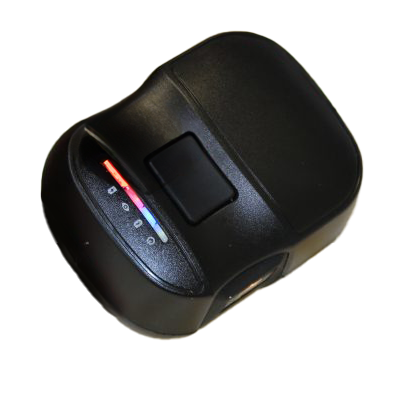Ensure Your Packaging is NIR-Sortable
The New Standard: NIR Sortability is Key to Recyclability
The revised EU Packaging and Packaging Waste Regulation (PPWR) sets a clear target: packaging must include at least 30% recycled content by 2030. However, recycled material can only be sourced from plastics that are actually sortable in today’s NIR-based recycling systems.
Despite being technically recyclable, many packaging formats still fail this critical test. Dark colors, metallic inks, and complex multilayers often render packaging invisible to optical sorters.
If it can’t be seen, it can’t be sorted - and that means it won’t be recycled.
This not only jeopardizes your recyclability claims but can directly impact your brand image, compliance, and long-term packaging strategy.
Test Plastic Sortability Instantly with trinamiX
Our solution combines the trinamiX PAL One handheld spectrometer with the “10 Plastics Reflectivity” software app. It allows you to:
“Your plastic may be recyclable. But is it NIR-sortable? That’s the new gold standard.”
The scanner provides reliable data wherever you are — in development labs, supplier audits, or at the packaging line. All results are securely saved to your personal customer portal.
Why It Matters
Failure to meet sortability requirements has real-world consequences:
Real-world audits (e.g. Susycheck, 04/2025) show recurring issues:
Without scientific validation, recyclability remains a promise - not a fact.
How It Works - 3 Steps to Insight
- Scan your plastic sample using the PAL One NIR spectrometer
- The app provides the reflectivity level and attempts to identify the polymer
- Results are saved to your customer portal - including detailed PDF reports with confidence ratings
The system uses industry-validated chemometric models and follows the APR Sort-S-01 guidelines. If reflectivity is under 10%, the sample is flagged as non-sortable. However, a precise ID may still be possible based on spectral markers.
Sample results:
- White PE tray:
Reflectivity 11.8%, ID:
PE, subclass: LDPE → SORTABLE- Black PET bottle: Reflectivity 4.2%, ID:
PET → LIMITED SORTABILITY- Black carbon clip:
Reflectivity < 1%, ID failed → NOT DETECTABLE
Core Use Cases
1. Regulatory Approval and External Audits
For packaging manufacturers working with internal QA or external consultants (e.g. RecyClass, Susycheck) to certify PPWR compliance.
2. Packaging R&D and Additive Testing
For development teams testing formulations and packaging designs: These use cases drive faster innovation and more compliant design cycles.
Who Should Use This Tool?
Whether you’re developing new packaging or validating existing formats, this tool gives you a decisive advantage.
Product Highlights
- Compact NIR spectrometer: PAL One (battery life ~6,000 scans)
- Software: 10 Plastics Reflectivity App (Android, iOS, Windows)
- Polymer types: PET, HDPE, LDPE, PP, PVC, PS, ABS, PC, PA, PLA
- Result within seconds, stored in encrypted cloud portal
- PDF report with reflectivity, polymer ID, and sortability rating
- Secure architecture: AES-256 encryption, BASF Microsoft Azure cloud
- API integration and semi-automated sorting table compatibility
Ready to Take the Next Step?
Let’s make your packaging circular by design - with clarity, compliance, and confidence.






